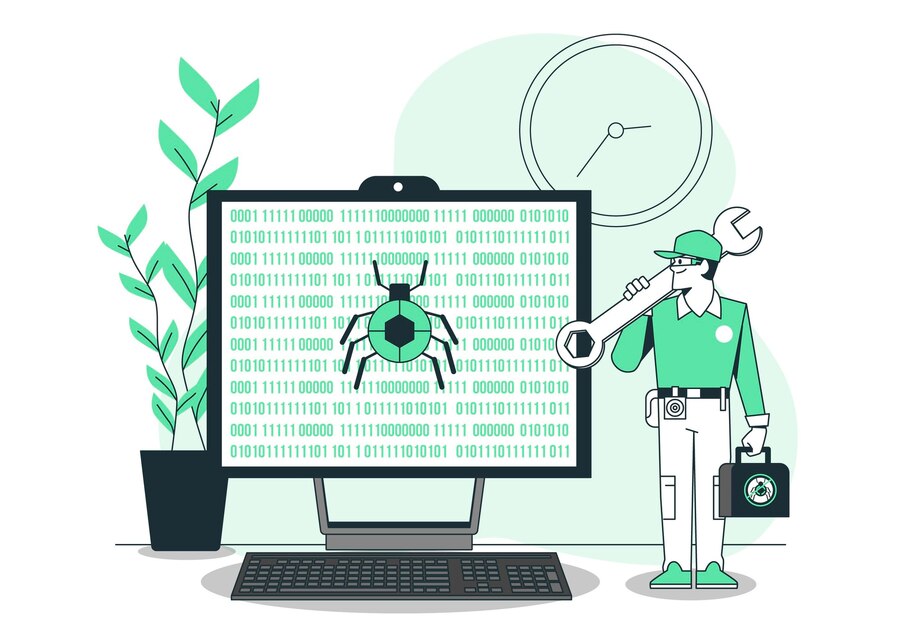The Role of Automated Testing in Bug Tracking and Software Quality Assurance
10 Mar

Table of Contents
ToggleIn a world where it’s getting harder for a software product to get ahead of its rivals due to the insanely saturated market, impeccable software quality can become a crucial competitive advantage. Businesses use different ways to increase the efficiency of their testing process, from trying new, innovative techniques to working with international testing companies to test more in less time.
Still, companies all over the world also continue relying on tried and tested techniques like bug tracking. But how does automation come into play with bug tracking in software testing and what can you achieve when you combine the two of them? Let’s take a closer look at the way bug tracking and automation work together.
Automated Testing in Quality Assurance: A Quick Overview
Automated testing is a concept that has been around for decades. It refers to the practice of automating parts of the software testing suite and then running tests automatically on a predefined schedule with little to no involvement from the team.
The value and importance of test automation are not up for debate: it helps achieve more in testing and make QA more effective and precise while using fewer of the company’s resources and creating scalable, repeatable tests that don’t deteriorate after they are run once.
What Is Bug Tracking and Why Does It Matter for Software Quality Assurance?
Bug tracking is the process of recording and monitoring software defects and errors discovered in the process of testing. And a bug report in testing is an essential document that not only lists the bug, but also contains vital information that can help developers and other stakeholders understand how the bug occurred, what steps are needed to replicate it, and how it can impact user experience, performance, security, and other features of the software solution.
Bug tracking has been around for as long as software testing itself. However, for a long time, testers relied mainly on things like spreadsheets and emails to track bugs, which was obviously inefficient, time-consuming, and severely prone to error and data loss.
The emergence of specialized tools for bug reporting in software testing significantly improved the entire process. Over the years, businesses have been investing an increasing amount of resources into bug tracking, with the bug tracking software market size expected to grow from $218.22 million in 2018 to $601.64 by 2026, achieving a CAGR of 13.6%.
Using Automated Testing in Bug Tracking and Software QA
Automated testing and bug tracking are two of the most commonly used and commonly discussed software testing methods, so it’s not at all surprising that testers have been looking for ways to integrate them together into their workflow. According to the experience of the testing teams who have already tried it, the two techniques combined result in a streamlined testing process with noticeable improvements in efficiency and risk minimization.

The most common way to use automated testing in bug tracking is to automate the bug reporting process itself. When a test encounters a bug, it can automatically create a bug report, specifying the details of the bug and filling out all the necessary information, complete with screenshots and videos. When executed right, this speeds up the process of locating and resolving bugs, leading to faster and more stable software releases – which is one of the main goals of testing in the first place.
Advantages of Automation for Bug Tracking in Software Testing
Just like using bug tracking for automation testing has many tangible advantages, automation can also significantly benefit the bug tracking process. Here are the main reasons why automation testing companies need to invest more in automation for bug tracking in app testing:
- Higher test coverage. Automated testing helps cover more scenarios, including edge cases and scenarios that are difficult or downright impossible to execute and repeat manually, while using the same amount of the company’s resources. This helps dramatically increase test coverage and significantly improve the quality of software.
- Faster detection and resolution of bugs. In addition to more efficient recording and management of bugs, automated testing also helps discover bugs quickly by using repeated tests that can be run with any frequency you like. Developers, in turn, get the information they need faster and can immediately start working on resolving the bugs.
- Consistent testing results. By creating detailed bug reports in a unified format with no fields missing and no data mishandled, automation allows to get a clear picture of the state of the software product and make the results of testing more consistent and usable for all parties involved.
- Increased repeatability of tests. Automated tests are designed to be run repeatedly an unlimited number of times, with little to no changes between reruns. Compared to manual testing, where tests can hardly ever be reproduced, the repeatable nature of automation helps enhance the bug tracking process.
- Improved collaboration between teams. The streamlined automated bug tracking procedure and the consistency of the automation testing process create a strong foundation for fostering collaboration between the testing and development teams. It helps the team members communicate more efficiently and resolve issues faster.
How to Make the Most of Automated Testing in Bug Tracking
By all accounts, combining the potential of automated testing with the efficiency of bug tracking will benefit the whole software quality assurance procedure. Still, there is the right way to go about introducing automation in bug tracking, and here are some tips to make it work in your favor:
- Ensure transparent communication within the team. At every step of the way, from when you decide to change your testing workflow to when you obtain the first results of the reshaped bug tracking process, your team must be fully aware of the changes and their role in the transformation.
- Introduce clearly defined workflows. To gain maximum efficiency from automated testing in bug tracking, you need a definitive plan with realistic goals and milestones. It’s also vital to outline key roles and responsibilities on the project, tools and access levels, and what needs to be achieved at each stage.
- Allocate time for training. Any change in the established workflow, especially when it’s as major as adding automation testing to the mix, requires a complete understanding from every project member. This is why, even when you’re in a rush to start the transformation, it’s integral to implement training and knowledge sharing within the team.
- Review and improve continuously. Introducing automation testing to bug tracking is not a one-and-done endeavor. There needs to be a clear reporting system that allows you to quickly evaluate the progress and the bottlenecks of the project, and you also need to be able to act quickly and make the necessary changes to improve the procedures.
Final Thoughts
The combination of bug tracking and testing automation is a match made in heaven: together, they can streamline the entire testing process and dramatically improve the efficiency of testing. And, with the growing number of techniques and solutions that pair the two concepts, we have no doubt that automating the bug tracking process will further gain traction in the coming years. And we will be there to witness its transformation and growing importance.
Author’s Bio:
Dan Sapohov is a Business Development Executive at TestFort. Dan has been with the company for more than a decade. He has a rich technical background and a passion for coding. Deep understanding of software development processes, strategic planning, and analysis enable Dan to help businesses quickly and efficiently solve their everyday development challenges with best-suited practices, methodologies, and development techniques. In his off hours, Dan enjoys reading online technology magazines as a hobby.
Ensure Software Quality with zipBoard
Test, track and report bugs in one place - with little manual effort
Learn how zipBoard worksRelated Post
Recent Posts
- Best Practices for Efficient Document Reviews and Collaboration December 18, 2025
- MEP Document Management: How to Streamline Reviews & Avoid Rework October 3, 2025
- What Is Online Proofing Software? And Why Content Review Breaks Without It July 11, 2025
- How Laerdal Medical Cut eLearning Review Time by 50% with zipBoard’s Visual Review Tool July 9, 2025
- Why Your Team Needs a Content Feedback System (Not Just Comments in Docs) May 28, 2025
©️ Copyright 2025 zipBoard Tech. All rights reserved.


